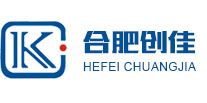Behind China's Auto "Great Power": Foreign Capital Takes 70% of Profit
发布日期:2018-04-04 浏览次数:1296
The Chinese auto market has become a paradise for the global automotive industry. If any multinational automobile company does not put the Chinese market at the top of the list, it is probably rare news.
The ever-increasing production and sales volume of cars will push China to the top of the world's automotive manufacturing powerhouse. Behind the market prosperity, however, it is difficult to conceal the weakness of the domestic auto industry itself.
When many car companies discovered China’s huge market of 13.65 million vehicles in last year’s global auto market, it seemed as if they had caught the straw. The global auto giants including Toyota, Volkswagen, General Motors, Nissan, Honda, and Hyundai-Kia are turning to China. This year, the sales of mainstream multinational car companies in China have all increased by more than 20%.
With the surge in sales, the Chinese market has quickly become the main source of profits for multinational giants.
In the first quarter of the year, the German Volkswagen Group had a pre-tax profit of 703 million euros, of which 286 million euros came from the Chinese market, which was three times that of the same period last year. And nearly 300 million euros of profits already accounted for 40% of all Volkswagen Group's pretax profit.
In order to earn more profits, Volkswagen decided to continue investing an additional 1.6 billion euros in China. At this point, in the next three years, the public will invest 6 billion euros in the Chinese market.
Toyota Motor Corporation, the world’s No. 1 automaker, reported a loss of US$4.4 billion in fiscal 2008, but according to media reports, Toyota’s two joint ventures in China, FAW Toyota and GAC Toyota, had a profit of around US$1 billion in 2008.
Honda’s net profit for 2009 was US$3.18 billion, of which net profit in China reached US$2.86 billion.
In order to extract more high profits in China, more and more multinational car giants have set up Asia Pacific headquarters in China. Wang Xiaoguang, a researcher in the Department of Policy Consulting at the National School of Administration, believes that the pattern of China's auto market is that international capital accounts for 40% of the capital, occupies 50% of the total, and draws 70% of its profits.
The rapid expansion of market capacity is the most stable source of profits. It is widely expected by the industry that this year's auto market will continue its development trend last year and continue its strong growth. The annual production and sales volume is expected to exceed 17 million vehicles. As a result of the further expansion of the market, more profits were taken by foreign giants. However, behind the fast-growing market, it is the Chinese automotive industry that has yet to grasp the dilemma of global advanced automotive technology.
Experts in the industry have been concerned about the “large but not strong” domestic auto industry. The chief economist of the Global Institute of Finance and Economics Song Xiang has long found that foreign giants earn money for design, new materials and new technologies, while China currently has It is the producer's role that is mainly responsible.
A review of the current status of domestic and foreign large- and small-sized domestic vehicle manufacturers, both of which are always at the bottom of the automobile manufacturing industry chain, are rarely among international brands in the area of independent brands.
Recently, the International Automobile Manufacturers Organization (OICA) released statistics on global car production in 2009. According to statistics, through the merger of Changan Automobile and Hafei Automobile, two microcar companies owned by AVIC, China’s Chang’an has become the highest-volume automobile group among Chinese auto companies with 1,425,800 units, ranking 13th among global auto companies.
Beiqi Group, Dongfeng Motor, FAW Group, Chery, BYD, and SAIC ranked 18th, 20th, 21st, 22nd, 24th, and 25th respectively in the world's auto companies. Almost by the vast majority of mainstream foreign car groups left behind.
In China, statistics on the production and sales volume of automobile companies have always been based on the production and sales volume of all automobiles, including joint-venture brands and independent brands under the auto group. However, this ranking conceals the real situation of the development of self-owned brands. From the statistics of OICA, it is possible to clearly understand the competitive position of China's auto manufacturing industry in the global industry.
The executive vice chairman and secretary-general of the Chinese Society of Automotive Engineers Fu Yufu said frankly in an interview with reporters that in terms of China, whether it is the core technology of traditional automobiles or new energy vehicles, compared with the international advanced level, there are still great gap.
"Including vehicle technology, the automatic transmission is a blank. In the automotive electronics technology, the distance between us and the international advanced level has increased, and there are gaps in the lightweight technology of automobiles. In short, it is at the core of automobile manufacturing. In terms of technology, there is not a small gap between China and the rest of the world, said Fu Yuwu.


